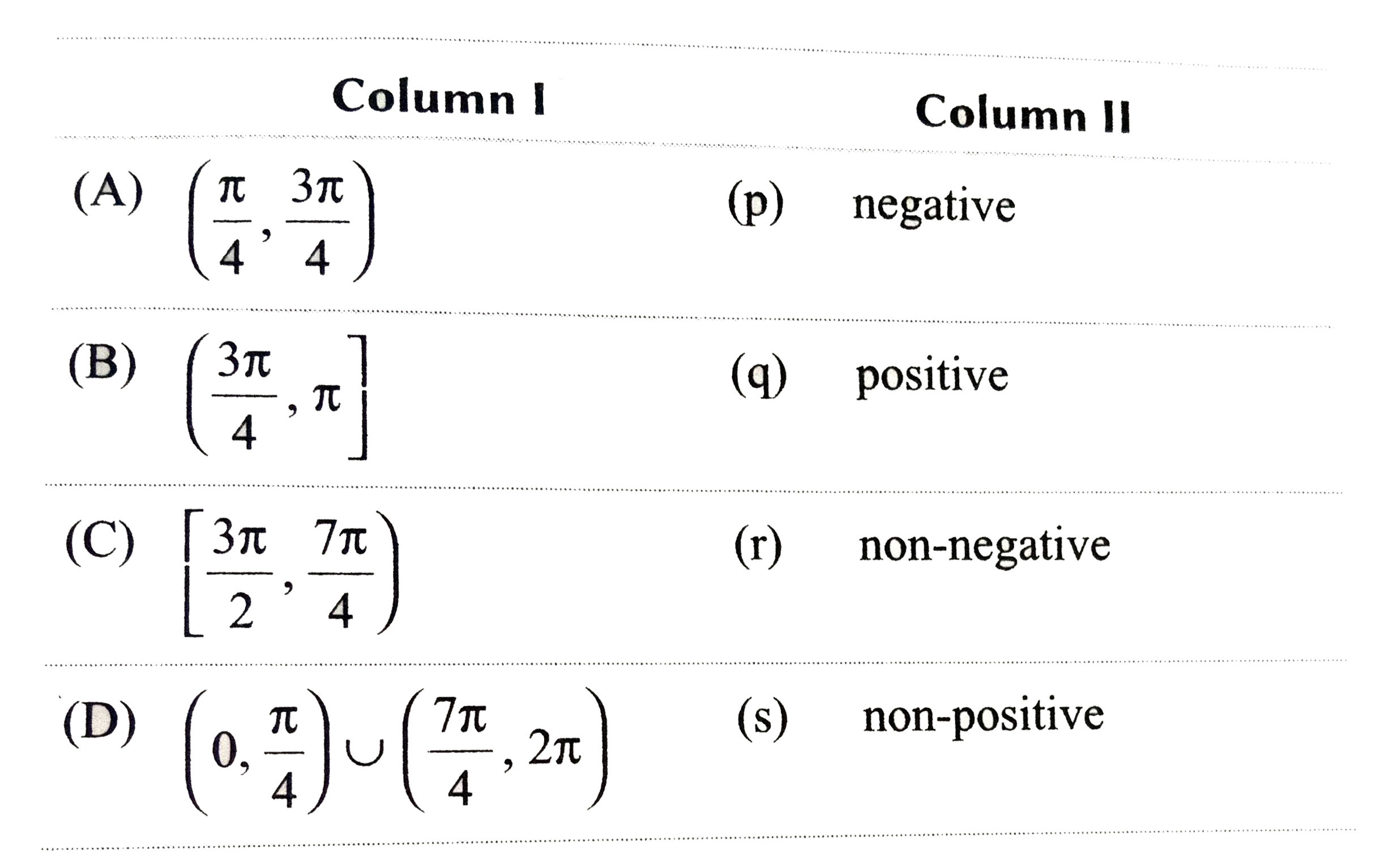Find the number points where f(θ)=∫1−1sinθdx1−2xcosθ+x2 is discontinous where θ∈[0,2π].
The correct Answer is:3
To find the number of points where the function
f(θ)=∫1−1sinθ1−2xcosθ+x2dx
is discontinuous for θ∈(0,2π), we follow these steps:
Step 1: Analyze the integrand
The integrand is given by
sinθ1−2xcosθ+x2.
We need to identify when this function becomes undefined or discontinuous. The denominator 1−2xcosθ+x2 can be rewritten as:
(x−cosθ)2+sin2θ.
Step 2: Identify points of discontinuity
The function will be discontinuous when the denominator equals zero, which occurs when:
(x−cosθ)2+sin2θ=0.
This equation holds true if and only if both terms are zero:
1. (x−cosθ)2=0⟹x=cosθ
2. sin2θ=0⟹sinθ=0
Step 3: Solve for θ
From sinθ=0, we find the values of θ within the interval (0,2π):
- θ=0
- θ=π
- θ=2π
These are the points where sinθ is zero.
Step 4: Check the corresponding x values
Now we check the corresponding x values:
- For θ=0, cos(0)=1 → x=1
- For θ=π, cos(π)=−1 → x=−1
- For θ=2π, cos(2π)=1 → x=1
Step 5: Determine points of discontinuity
The function f(θ) is discontinuous at:
- θ=0 (where x=1)
- θ=π (where x=−1)
- θ=2π (where x=1)
However, since x=1 occurs for both θ=0 and θ=2π, we count it only once.
Conclusion
Thus, the points of discontinuity for f(θ) are:
- θ=0
- θ=π
- θ=2π
This gives us a total of 3 points of discontinuity.
Final Answer
The number of points where f(θ) is discontinuous is 3.
---
The integrand is given by
The function will be discontinuous when the denominator equals zero, which occurs when:
2. sin2θ=0⟹sinθ=0
From sinθ=0, we find the values of θ within the interval (0,2π):
- θ=π
- θ=2π
Now we check the corresponding x values:
- For θ=π, cos(π)=−1 → x=−1
- For θ=2π, cos(2π)=1 → x=1
The function f(θ) is discontinuous at:
- θ=π (where x=−1)
- θ=2π (where x=1)
Thus, the points of discontinuity for f(θ) are:
- θ=π
- θ=2π
The number of points where f(θ) is discontinuous is 3.
Topper's Solved these Questions
- INDEFINITE AND DEFINITE INTEGRATIONBook:VK JAISWAL ENGLISHChapter:INDEFINITE AND DEFINITE INTEGRATIONExercise:EXERCISE (MATCHING TYPE PROBLEMS)
Explore 2 Videos
- HYPERBOLABook:VK JAISWAL ENGLISHChapter:HYPERBOLAExercise:Exercise-4 : Subjective Type Problems
Explore 3 Videos
- INVERSE TRIGONOMETRIC FUNTIONS Book:VK JAISWAL ENGLISHChapter:INVERSE TRIGONOMETRIC FUNTIONS Exercise:Exercise-5 : Subjective Type Problems
Explore 6 Videos
Similar Questions
Letf(θ)=∫10(x+sinθ)2dxandg(θ)=∫10(x+cosθ)2dx
where θ∈[0,2π]. The quantity f(θ)−g(θ),∀θ in the interval given in column I, is

View Solutioncosθ+sinθ−sin2θ=12,0<θ<π2
View SolutionThe number of solutions of the equation sin5θ+1sinθ=1cosθ+cos5θ where θ∫(0,π2), is
View SolutionIf x=2(θ+sinθ)andy=2(1−cosθ), then value of dydx is
View SolutionThe number of roots of (1−tanθ)(1+sin2θ)=1+tanθ for θ∈[0,2π] is
View SolutionIf cos3θ(1−sinθ)+sin3θ(1+cosθ)=1+cosθ, then number of possible values of θ is ( where θ∈[0,2π])
View Solution1+sin2θ+cos2θ1+sin2θ−cos2θ=
View SolutionConsider the function f(θ)=∫10∣∣√1−x2−sinθ∣∣√1−x2dx, where 0≤θ≤π2, then
View SolutionEvaluate ∫π/20cosθtan−1(sinθ)dθ.
View SolutionIf cosθ−sinθ=15, where 0<θ<π4, then

View Solution